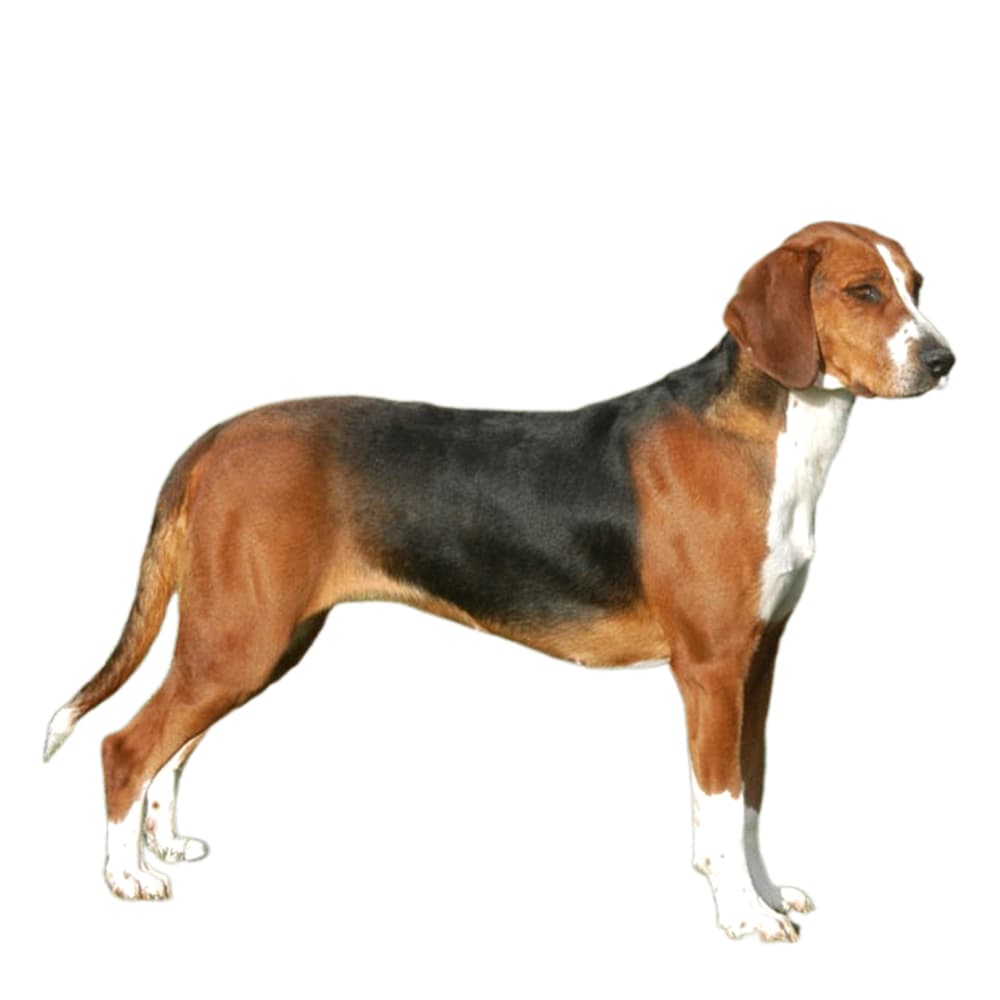Discover your dog's connection to this breed and 200+ others



Discover your dog's connection to this breed and 200+ others


The Hamiltonstovare, also known as the Hamilton Hound or Swedish Foxhound, is a relatively young dog breed developed in Sweden. The breed's creation can be traced back to the early 20th century when the founder, Count Adolf Patrick Hamilton, sought to create a versatile scent hound suitable for hunting in the Swedish countryside. To achieve this, he crossed the Harrier, English Foxhound, and various Swedish hounds, resulting in the Hamiltonstovare we know today.
The Hamiltonstovare can suffer from hip and elbow dysplasia, degenerative myelopathy, and progressive rod-cone degeneration. As for all breeds, genetic screening is recommended to assist veterinarians with diagnosis and proactive care, as well as help breeders identify affected and carrier dogs.
Hamiltonstovares are known for their friendly and even-tempered personalities. They are loyal and affectionate towards their families, making them excellent family companions. As scent hounds, they have a keen sense of smell and love to follow scents, so proper training and supervision are essential when outdoors, as they might get easily distracted. They are generally good with children and other larger pets but should be socialized from an early age to ensure well-rounded behavior. They do have a strong prey drive, so they might not be suitable in households with smaller pets.
A canine genetic lineage is a group of individuals or entire breeds that descended from common ancestors predating modern breed formation. Often these lineages are associated with a ‘type’ of dog with a unique historical working role and associated behaviors (e.g., herding, scent hunting, etc.).
The Pointer-Spaniel lineage encompasses both pointer and spaniel breeds. They were both bred for their specialized hunting abilities in Europe. Pointers locate game and freeze in a stance, called “pointing”, to indicate to their hunter that birds are close by. Spaniels were bred to find game in underbrush and retrieve it. Both pointer and spaniel breeds were bred to enhance their strong senses, trainability, and endurance as these are advantageous in a hunting partner. Spaniels and pointers are known for their strong work ethic, ability to work closely with humans and agility. These dogs’ ability to work closely with their hunters makes them an asset during a hunt because they follow direction well and know how their hunters want them to proceed.
Example breeds with ancestry from this lineage include English Cocker Spaniel, Irish Red Setter, and German Shorthaired Pointer.
The breed's name, Hamiltonstovare, is derived from the founder's name, Count Hamilton, and the Swedish word "stövare," which means hound.
Hamiltonstovares have an excellent sense of smell, which makes them well-suited for tracking and trailing scents, making them valuable hunting companions.
The breed gained recognition by the Swedish Kennel Club in 1921 and has since gained popularity not only in Sweden but also in other countries as a skilled and amiable canine companion.
https://vgl.ucdavis.edu/breed/hamiltonstovare?page=1
https://www.ukcdogs.com/hamiltonstovare-hamilton-hound
https://www.purina.co.uk/find-a-pet/dog-breeds/hamiltonstovare https://www.fci.be/en/nomenclature/HAMILTONSTOVARE-132.html
https://www.akc.org/dog-breeds/hamiltonstovare/
Recommended by top vets with decades of experience
21 breeds
64 genetic health markers
50 genetic trait markers
